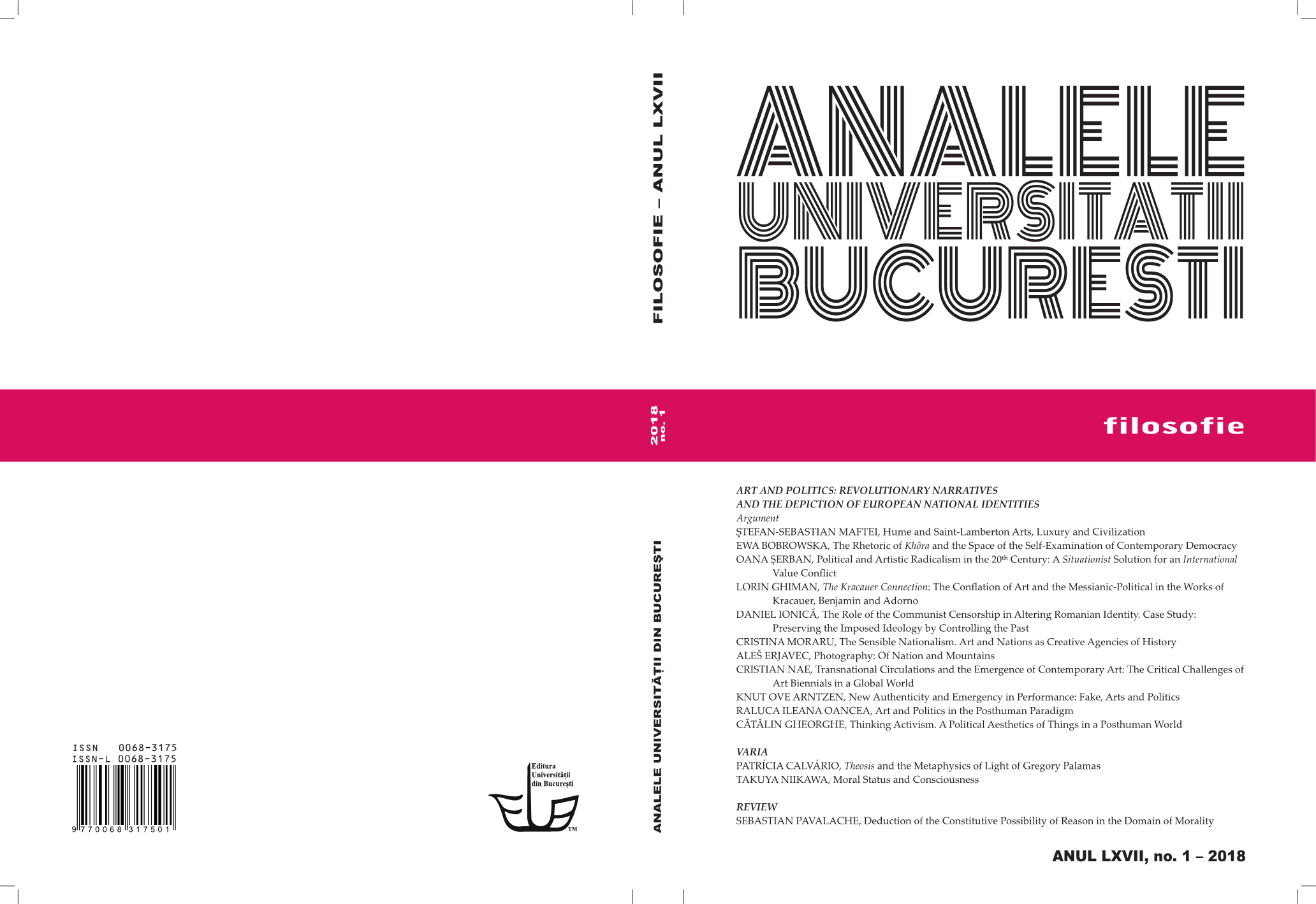Transnational Circulations and the Emergence of Contemporary Art: The Critical Challenges of Art Biennials in a Global World
Transnational Circulations and the Emergence of Contemporary Art: The Critical Challenges of Art Biennials in a Global World
Author(s): Cristian NaeSubject(s): Politics / Political Sciences, Philosophy, Fine Arts / Performing Arts
Published by: Editura Universităţii din Bucureşti
Keywords: globalization;cultural change;circulations;decoloniality;post-socialism;
Summary/Abstract: In his article the author presents ways in which in the last two centuries mountain photography was employed by Slovenians in establishing their national identity or sentiment. He points out the similar, yet also different development of realism in painting, on the one hand, and, on the other, the historical development of photography. He furthermore explores history of photography and of mountain photography in particular, and argues that in the case of Slovenia for a variety of reasons the mountains acquired a very special value. He notes that other countries too, possessed similar loci that played a similar role in similar ways but that they have never attained a similar decisive role as the mountains in Slovenia. The author points out that the photographic representation of mountains is but one of the instances of an imaginary employment of photography, for in the last few decades the representations of mountains could be found on a series of symbolic national objects, such as provisional Slovenian currency, the national flag, and the passport.While the proliferation of art biennials appeared to offer a platform for critical resistance and representation formulated in local terms in an increasingly networked world, their conjunction with (and inseparability from) the global flows of capital and the contemporary experiential culture led to an intensified critical scrutiny in the last decade. This article questions the assumption of the critical agency of low-budget biennials set up in formerly peripheral regions of the world as opposed to the historical ones based on the principles of national representation. Taking into account the micro-histories of cultural exchanges taking place between countries in the former East across the Iron Curtain, it claims that, far from formulating a convincing critique of dominant capitalism or truly challenging the dominant art historical canon, most biennials in the formerly peripheral regions tend to contribute to the replication of global capital, enhancing its trans-national fluidity. The most successful ones in this respect, I would argue, tend to invent new localities and contribute to the critical process through innovative aesthetic formats which become politically sharp discourses.
Journal: Analele Universității din București – Seria Filosofie
- Issue Year: 67/2018
- Issue No: 1
- Page Range: 157-169
- Page Count: 22
- Language: English

